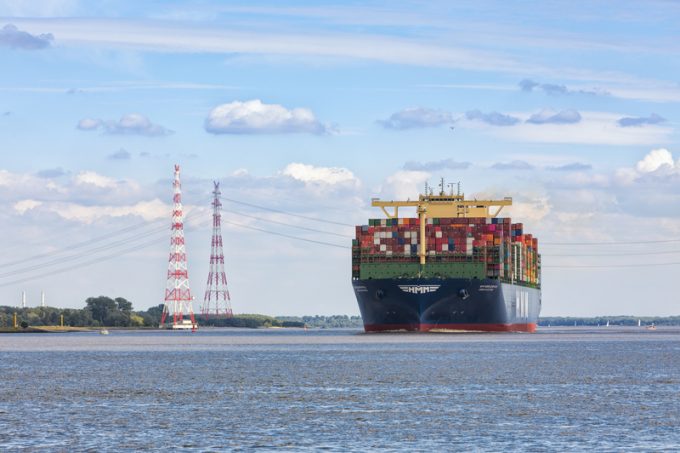Container spot rates have peaked as all major trades see prices fall
There was more evidence in this week’s container port freight markets that peak prices on ...
TFII: SOLID AS USUALMAERSK: WEAKENINGF: FALLING OFF A CLIFFAAPL: 'BOTTLENECK IN MAINLAND CHINA'AAPL: CHINA TRENDSDHL: GROWTH CAPEXR: ANOTHER SOLID DELIVERYMFT: HERE COMES THE FALLDSV: LOOK AT SCHENKER PERFORMANCEUPS: A WAVE OF DOWNGRADES DSV: BARGAIN BINKNX: EARNINGS OUTODFL: RISING AND FALLING AND THEN RISING
TFII: SOLID AS USUALMAERSK: WEAKENINGF: FALLING OFF A CLIFFAAPL: 'BOTTLENECK IN MAINLAND CHINA'AAPL: CHINA TRENDSDHL: GROWTH CAPEXR: ANOTHER SOLID DELIVERYMFT: HERE COMES THE FALLDSV: LOOK AT SCHENKER PERFORMANCEUPS: A WAVE OF DOWNGRADES DSV: BARGAIN BINKNX: EARNINGS OUTODFL: RISING AND FALLING AND THEN RISING

South Korean ocean carrier HMM has posted its first annual profit for five years, despite a decrease in its liftings.
Revenue last year surged by 16.3%, compared with 2019, to $5.43bn, earned from a 9.2% decline in its container volume to 3.89m teu.
Net profit came in at $105m, in comparison with a loss of $500m the year before.
HMM moved back into the black in the fourth quarter, recording a net profit $137m, after 15 consecutive loss-making quarters and racking up some $3.5bn of red ink.
The carrier attributed its return to profitability to increased freight rates, lower fuel costs and the “network efficiency” achieved from the deployment of its 12 24,000 teu newbuild ULCVs within THE Alliance.
It said the introduction of another eight 16,000 teu vessels during the first half of this year would “further enhance” its cost structure and operational efficiency.
However, HMM warned, “the scarcity of containers and space on vessels will last through at least the first quarter of this year, with a likelihood that this situation continues until late spring”.
The acute box shortage in Asia, combined with vessels running full, has pushed freight rates on most tradelanes to record levels, and consequently turbocharged carrier profits.
Nevertheless, HMM said it expects rates to fall back after Covid-19 vaccines are rolled out around the world and consumer spending patterns “return to services instead of products”.
The carrier also noted that the recent recovery in oil prices had widened the spread between compliant low-sulphur fuel and the pre-IMO2020 industry normal of heavy fuel oil, which its newbuild vessels are able to consume due to scrubber technology.
HMM has recently overtaken THEA partner Yang Ming to become the eighth-largest carrier. With a fleet capacity of 728,233 teu and an orderbook of 128,080 teu, the carrier is well on its way towards its 2016 financial restructuring aspiration of a fleet of 1m teu.
HMM has worked hard to restore the confidence in South Korea’s shipping sector following the demise of Hanjin Shipping in 2016, and also appears to have ambitions to transform itself into a logistics business, following the growth strategy of some of its larger peers.
Indeed, in his traditional new year message to staff, HMM CEO Jae Hoon Bae said the carrier “should not limit itself” to the liner sector but develop its interest in “comprehensive logistics”.
In October 2018, the state-owned Korean Ocean Business Corporation agreed $5.4bn of new funding for the carrier, on the basis of which HMM placed orders for new ULCVs worth $2.6bn with compatriot shipyards.
The state subsidy provoked a storm of protest from European and Japanese shipping associations, which accused the South Korean government of “unfair competitive distortions”. It was also criticised by major carriers, but did not prevent HMM from being accepted into THEA as a full member last April.
Meanwhile, recent reports in the South Korean media that HMM’s largest shareholder, the Korea Development Bank, with a stake of 12.61%, was preparing to sell its holding to steel giant POSCO, have been denied by the bank.
Comment on this article